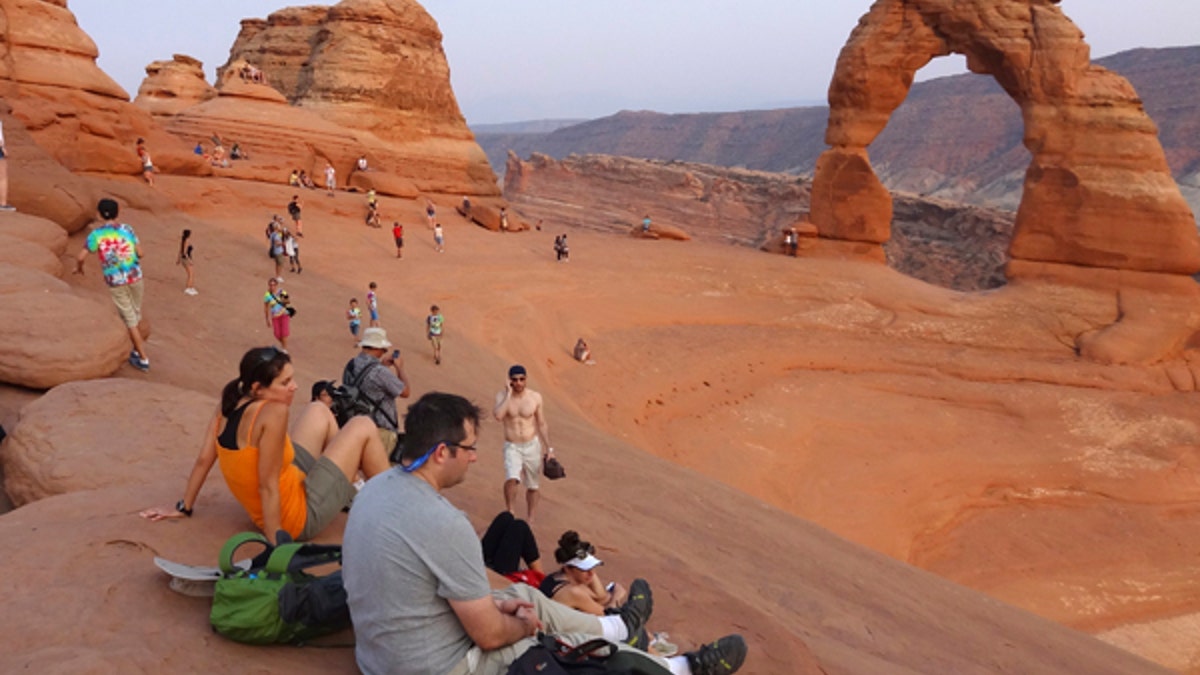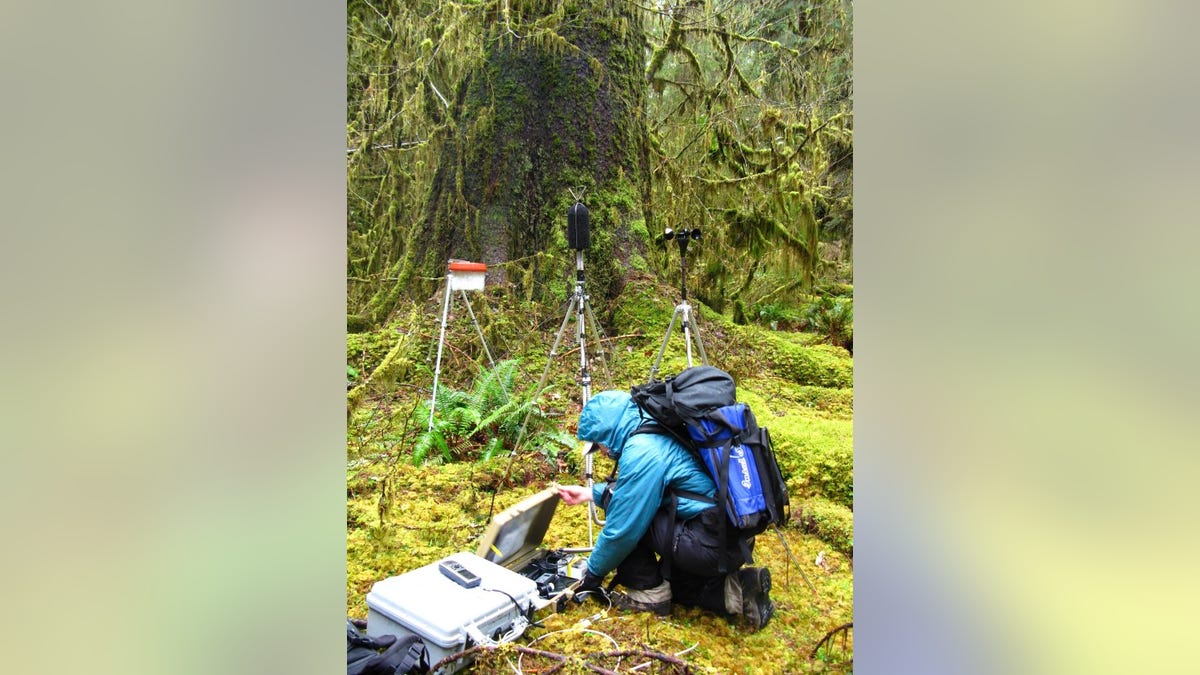
Tourists gather at the Arches National Park in Moab, Utah. (REUTERS/Charles Platiau)
Ahh, the great outdoors.
The wind whistles through the trees overhead, the birds chirp and flutter, a brook babbles along, the car horns and radios on a nearby highway blare incessantly…wait, car horns? Radios in the woods?
That’s right, according to a new study, more and more Americans venturing out into the country’s wild places in search of peace and quiet are realizing that the woods, mountains, canyons and other natural wonders aren’t so peaceful or quiet anymore.
According to a study conducted by Colorado State University and the National Parks Service, noise pollution in some parks is getting so bad that it is disrupting wildlife and scaring away animals, including endangered species.
Researchers took 1.5 million hours of sound recordings over the last decade from 492 sites and used a computer model to estimate the ambient noise naturally present at each site. The NPS scientists then compared two scenarios: protected areas with and without human-made noise.
What they found was that noise levels are twice as high as natural sound at 63 percent of those sites. And at 21 percent of the sites, man-made noise has risen to levels at least 10 times louder than background sound.
"You're in the middle of nowhere, yet you still can't escape the sounds of humans,” Rachel Buxton, an acoustic ecologist at Colorado State University, told the Alaska Dispatch News. “It really doesn't have any boundaries. There's no way of holding it in."
The findings also indicated that noise pollution has reduced by 50 to 90 percent the area where natural sounds can be heard. For example, a bird’s chirping in an area once could be heard 100 feet away, but now only can be heard from 10 to 50 feet away.
In an effort to cut down on the increasing levels of noise pollution, federal officials at the U.S. Forest Service and the Bureau of Land Management are considering building sound walls around industrial sites as well as implementing mandatory shuttle buses to cut car traffic in parks. They are also considering laying down new road surfaces better designed to absorb noise from engines and tires and diverting flight paths away from pristine ecosystems to already loud roadways.

In this photo provided by the National Park Service, a National Park Service staffer sets up an acoustic recording station in the temperate old-growth Hoh rainforest of Olympic National Park, Wash. The call of the wild is getting harder to hear. Peaceful natural sounds, bird songs, rushing rivers and rustling grass, are being drowned out by human-made noise in nearly two-thirds of Americaâs protected parks, forests and wilderness areas, a new study finds. (National Park Service via AP) (AP)
"We're realizing more and more just how delicate sound is, and how essential it is to things you wouldn't expect," Buxton said.
Noise pollution, however, isn’t only a problem for the wildlife in these parks. It is also a problem for the human visitors as well. Recent studies have shown that time in nature and around natural sounds leads to better moods and sharper memories.
“Natural sound is integral to the functioning of ecosystems, human health and human restoration. That’s why people seek out these protected areas,” Colorado State University conservation biologist George Wittemyer told the Denver Post. “And that is under threat. If we value natural soundscapes, then we need to make sure we protect them and mitigate some of the noise.”
